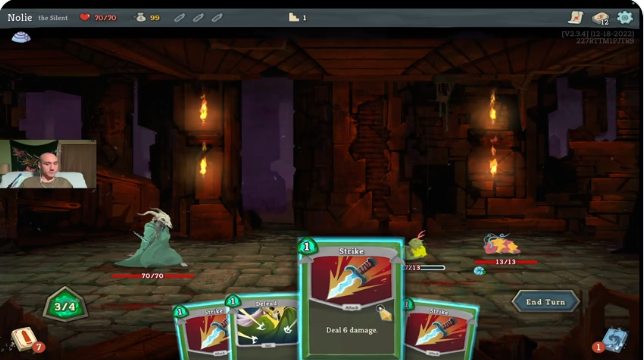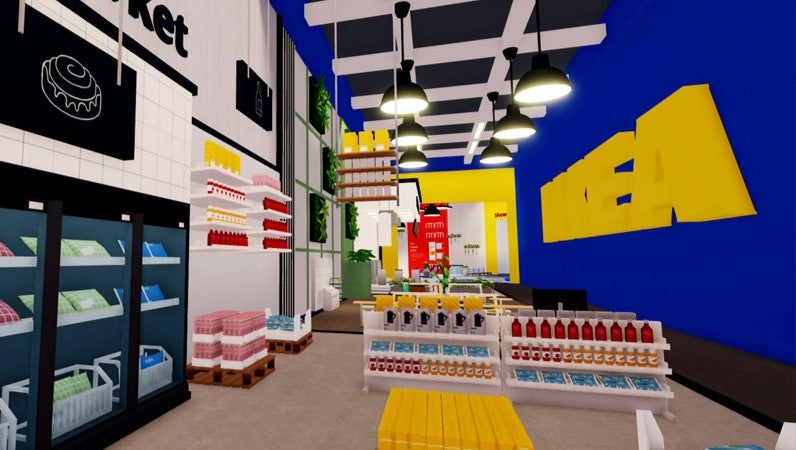The first human Neuralink implant recipient is playing Slay the Spire, Old School RuneScape, and a range of other popular games by using the implant to translate his neural signals.
Elon Musk’s neurotechnology company also revealed in a new update that a number of the implant’s electrode-bearing threads had retracted from the patient’s brain, leading to a temporary drop off in the performance of the brain-computer interface (BCI).
Back in January, Neuralink co-founder Elon Musk took to X to announce the company had implanted its first ‘N1’ brain chip in the head of a human patient as part of its Precise Robotically Implanted Brain-Computer Interface (PRIME) study. The patient was later revealed to be 29-year-old American quadrapalegic Noland Arbaugh, who had suffered paralysis below the shoulders after sustaining a spinal injury during a diving accident some eight years ago.
During the surgery, a circular section of skull was removed to grant a specialized robot access to a section of Arbaugh's brain. The robot used a needle thinner than a human hair to insert a collection of 64 ultra-fine electrode-bearing threads into the grey matter. These newly installed sensors are designed to detect the patient's neural signals, and send the resulting data up the threads to the main body of the N1 implant, which had been installed in the skull gap created during the surgical procedure. Signals from the implant are then transmitted to a Neuralink Application, which is being trained to decode the intent behind the information and convert it into executable actions, such as the movement of a computer cursor.
Prior to the surgery, Arbaugh had to rely on a mouth stick - an assistive tool that lets the user apply pressure to a touchscreen once placed in the mouth - to play games and interact with the digital world. While this did allow Arbaugh to use an iPad, it came with a range of drawbacks. For example, in order to use the mouth stick he had to be sat upright and have a caregiver present to give him the tool. Furthermore, he couldn't speak properly while using it, and prolonged use had the potential of triggering spasms and giving rise to pressure sores.
“I thought that the mouth stick was a lot better than BCI a month ago, when we compared them I saw that BCI was just as good if not better and it's still improving; the games I can play now are leaps and bounds better than previous ones,” Arbaugh was quoted as saying in a Neuralink blog update marking the 100 day anniversary of his surgery. “I’m beating my friends in games that as a quadriplegic I should not be beating them in.”
Neuralink revealed that Arbaugh had recently used the brain-computer interface for 69 hours in a single week, of which 34 hours were for recreational purposes. During this time, Arbaugh used the assistive tech to surf the internet, learn new languages, and play a range of video games, including the rogue-like deckbuilding title Slay the Spire, Old School RuneScape, Mario Kart 8 Deluxe, and Sid Meier’s Civilization 6, all by manipulating the cursor with his mind. The scientists are also working on a bespoke gaming functionality within the Neuralink app, which is being designed to give Arbaugh greater freedom as to how and when he can connect and play games.
What's on my mind? https://t.co/hq4n2Ep0BL
— Noland Arbaugh (@ModdedQuad) May 5, 2024
In the 100 days following his surgery, Arbaugh has set what Neuralink described as a "new world record for human BCI cursor control." He is currently able to use the interface to score a value of 8.0 bits-per-second (BPS), which is the measurement used by the scientific community to grade the accuracy and speed of computer cursor movements. For context, Neuralink engineers clocked in around 10 BPS using a physical mouse - a score Arbaugh is looking to best in the coming months.
The company also revealed that an unspecified number of the electrode-bearing threads that had been inserted into Arbaugh’s head during the installation of the N1 implant had "retracted" from his brain in the weeks after the surgery. The thread movement forced the Neuralink scientists to tweak the algorithm responsible for collecting and translating the neural data, which the company says has made up for the loss in performance.
IGN has reached out to Neuralink for comment on whether the withdrawal of the threads was an expected complication, and if the development could in any way impact the patient’s health, and will update this article to reflect any subsequent response.
Moving forward, Neuralink is looking to increase Arbaugh’s ability to control the cursor - partially by combating a known issue known as ‘cursor drift’, which is being combatted through the development of a 'bias correction' system - and by adding new functionality. More specifically, the researchers are hoping to allow users to control physical external aides, such as robotic arms, and wheelchairs using nothing but the link, which could in turn help quadriplegic patients gain a greater degree of autonomy.
Catch up on our earlier coverage to get up to date on Neuralink's road to human trials and past controversies surrounding animal testing complaints.
Anthony is a freelance contributor covering science and video gaming news for IGN. He has over eight years experience of covering breaking developments in multiple scientific fields and absolutely no time for your shenanigans. Follow him on Twitter @BeardConGamer











